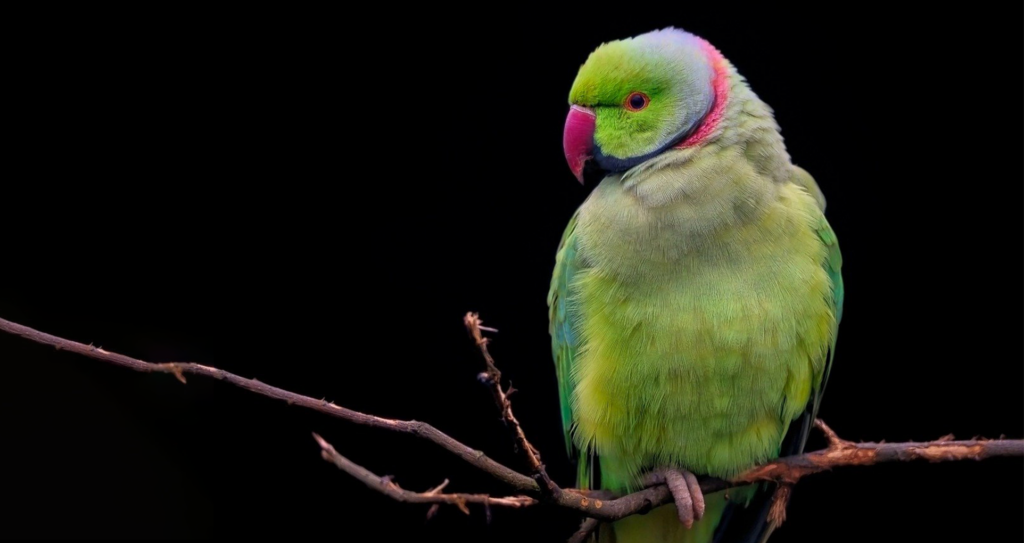Today’s post was contributed by Debra Anazonwu, MS, a science editor and writer. You can follow her on LinkedIn.
People have long been fascinated with birds, which exhibit one of the widest ranges of coloration among vertebrates. Parrots, in particular, have captivated humans by their ability to mimic human speech and spectacular plumage.
Brightly colored feathers are used primarily to attract mates, intimidate competitors, and protect birds from predators. Coloration is both environmentally and genetically mediated, and research into its genetic control can help us better understand its role in adaptation and survival.
Blue and yellow pigmentation combine to create the green hue—which blends well with the tree canopy—most commonly seen in wild parrots. In contrast, yellow alone is a popular color for captive-bred parrots. A study published in the February issue of G3: Genes|Genomes|Genetics investigates the molecular basis of yellow color variations in three species of captive-bred parrots.
Parrots’ yellow coloration has connections to albinism in humans
Researchers at the University of the Negev, led by principal investigator Uri Abdu, report that a mutation in SLC45A2 is responsible for the sex-linked yellow phenotype seen in Psittacula krameri and two other parrot species.
Although most birds employ dietary carotenoid pigments for yellow coloration, parrots use a unique group of pigments called psittacofulvins. The blue color of parrot plumage is partly due to light scattering by nanostructures within the feathers. Data suggested that the presence of melanosomes also plays a role in producing blue coloration. In contrast, the absence of melanosomes allows the solitary expression of yellow coloration.
Breeder data indicates that the yellow parrot phenotype is usually sex-linked. Unlike humans, sex chromosomes in birds are designated as Z and W. The male is the homomorphic sex (ZZ), and the female is heteromorphic (ZW). Pedigree analysis from breeders who supplied birds for the study implied that the sex-linked yellow locus resided on the Z chromosome. Therefore, the researchers hypothesized that a defect in a melanin synthesis gene located on the Z chromosome was primarily responsible for the yellow phenotype.
Using whole-genome sequencing, researchers zeroed in on one Z-chromosome gene with the help of previously annotated budgerigar genome data. They found one protein-terminating nonsense mutation and three nonsynonymous SLC45A2 polymorphisms in yellow parrots that were absent in wild-type parrots. Parrots with this mutation “lose melanin in their entire bodies,” Abdu explains.
In humans, changes in this gene can lead to oculocutaneous albinism type 4 (OCA4), which causes very little pigmentation. One of the mutations found in yellow Psitticula krameri is reported in the human albinism database and is associated with OCA4. Although mutations that can lead to albinism affect many species, this study provides the first evidence of parrot color variation involving SLC45A2.
Better genetic understanding supports breeding and conservation efforts
Shatadru Ghosh Roy, a Ph.D. candidate in Abdu’s lab, explains that this research can save breeders time and produce healthier hatchlings. To maintain the coveted yellow color mutation, breeders traditionally bred siblings, which led to unhealthy hatchlings that often died from lethal mutations. Now that breeders know the genetic basis of yellow coloration, they can breed parrots from distinct bloodlines and avoid the negative effects of inbreeding.
Another takeaway from this work concerns the parrot as a model organism. Abdu considers the parrot an ideal model system for studying the physical and genetic mechanisms underlying avian coloration. After all, parrots have been bred in captivity for decades—indeed, half of all parrots alive live in captivity—and breeders can provide abundant genetic information. Hopefully, more basic biological studies on parrots will add to the knowledge needed to keep parrots alive in the wild. Coloration is part of the parrot puzzle, and additional genetic research into these fascinating birds may uncover strategies to fight the extinction of natural populations. With almost one-third of wild parrot species threatened with extinction, Polly needs all the help she can get.
References
Mutations in SLC45A2 lead to loss of melanin in parrot feathers
Shatadru Ghosh Roy, Anna Bakhrat, Moty Abdu, Sandra Afonso, Paulo Pereira, Miguel Carneiro, Uri Abdu
G3: Genes|Genomes|Genetics. February 2024; 14(2).
DOI: 10.1093/g3journal/jkad254




